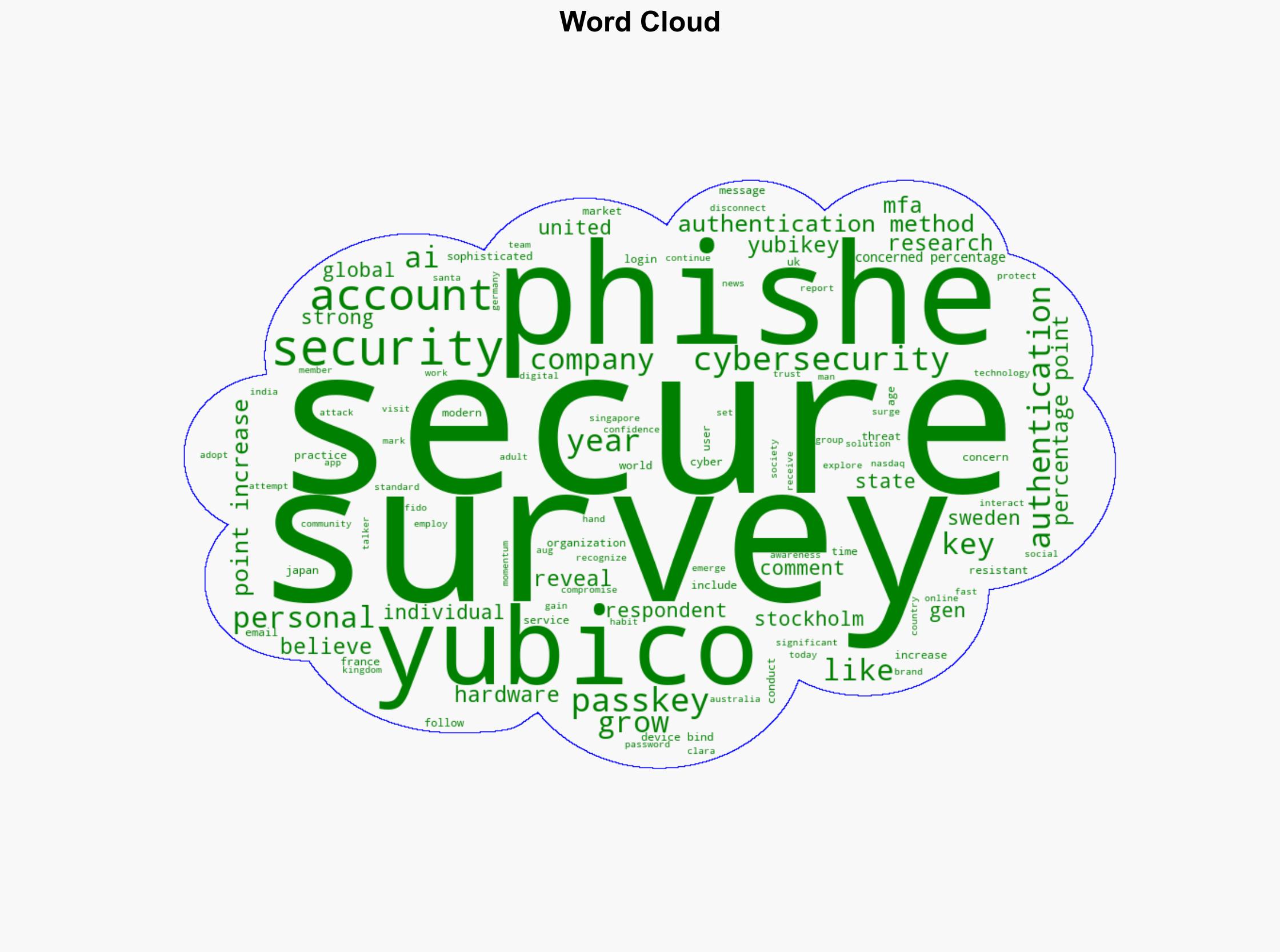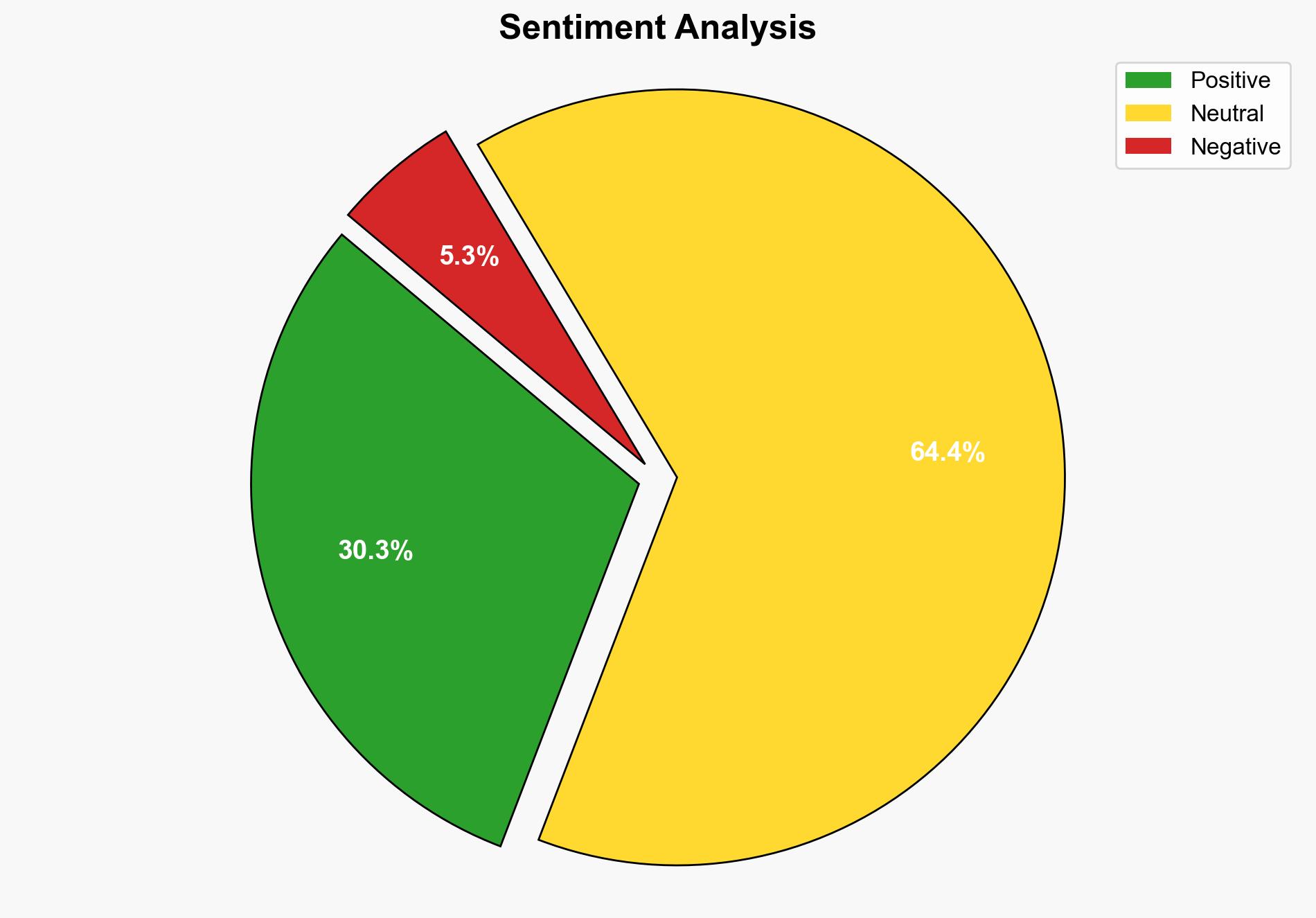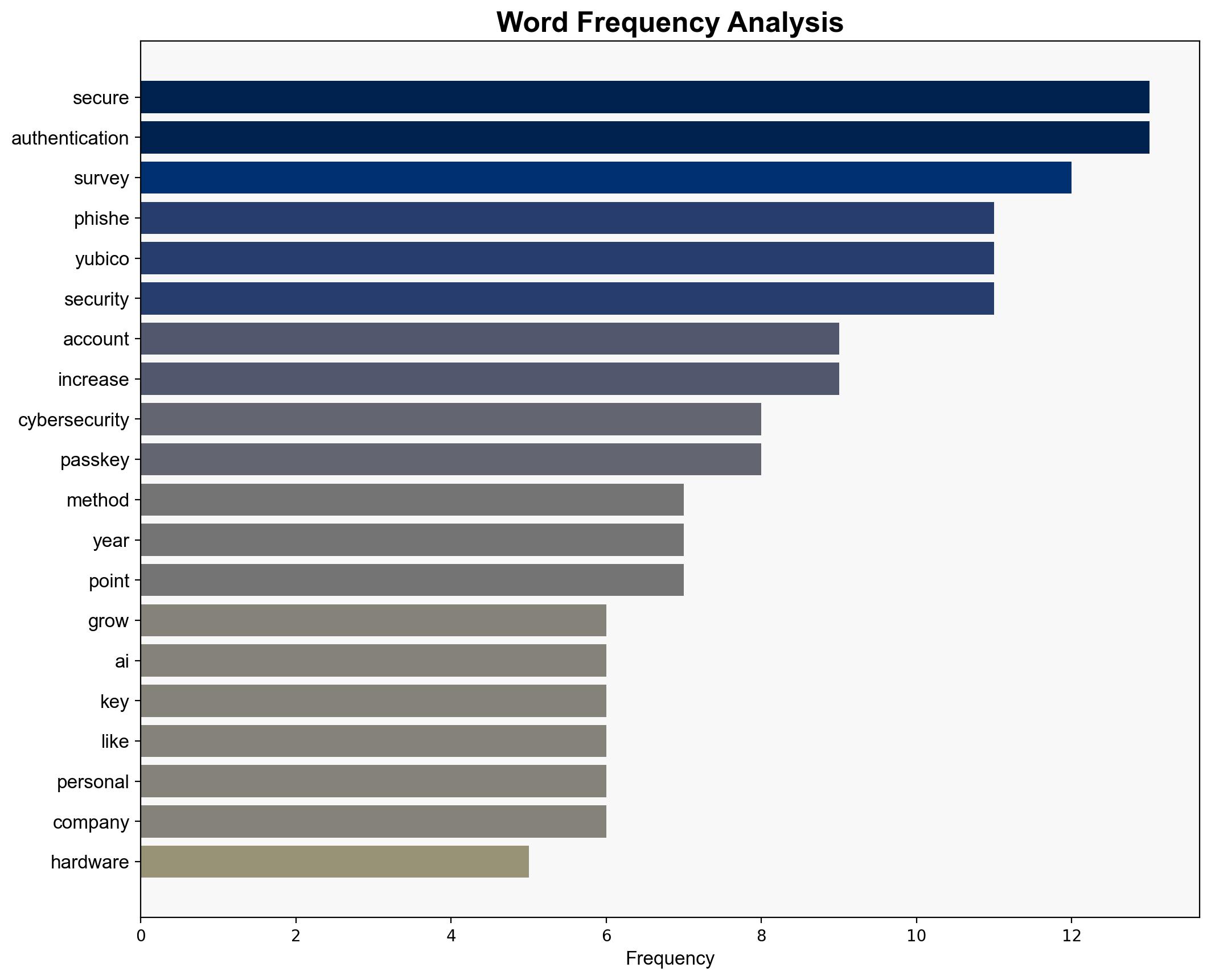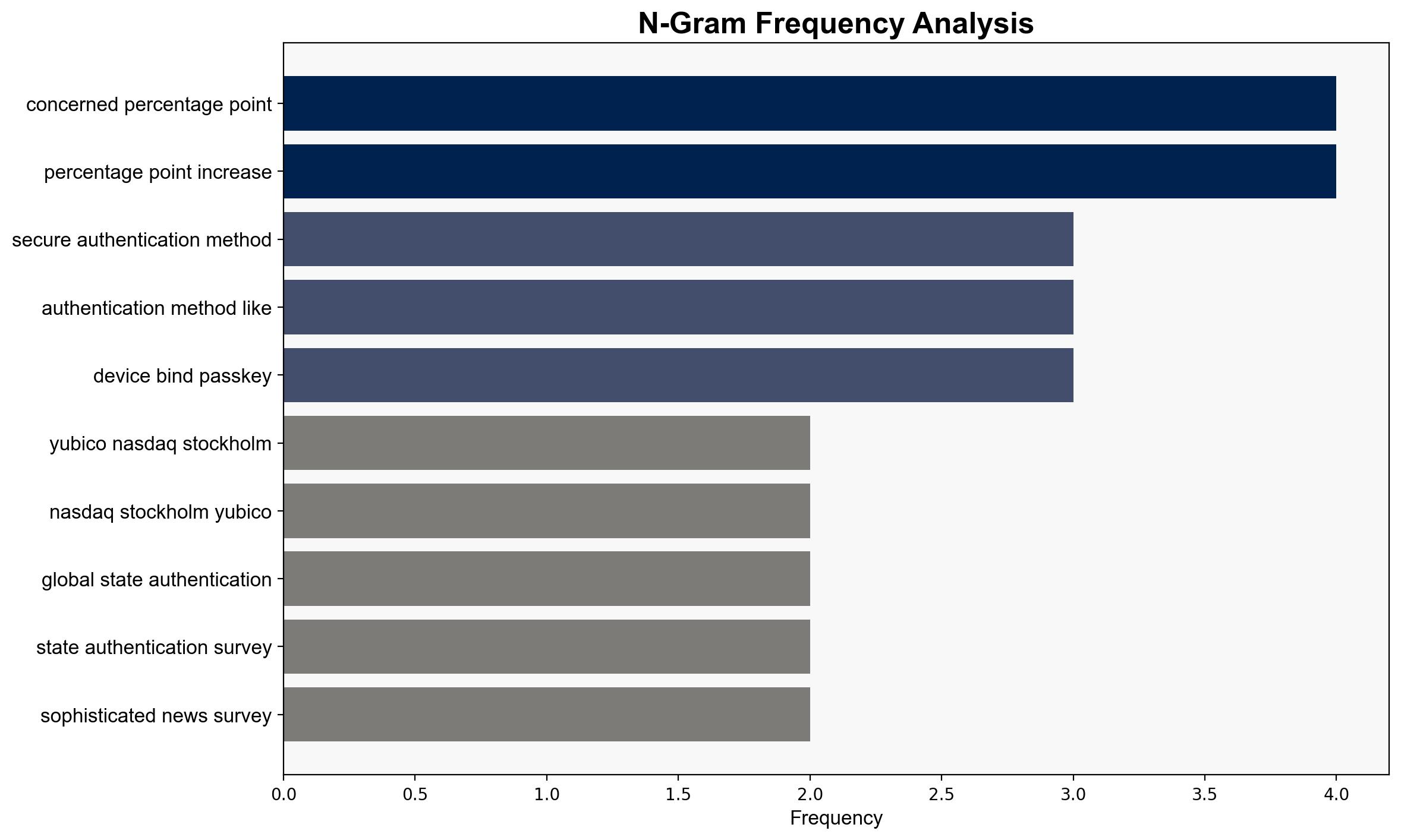Cybersecurity Wakeup Gen Z Tops the List for Falling for Phishing Attacks – Financial Post
Published on: 2025-09-30
Intelligence Report: Cybersecurity Wakeup Gen Z Tops the List for Falling for Phishing Attacks – Financial Post
1. BLUF (Bottom Line Up Front)
The analysis suggests that Gen Z’s susceptibility to phishing attacks is primarily due to a lack of cybersecurity awareness and training, compounded by the sophistication of AI-driven phishing techniques. The most supported hypothesis is that educational initiatives targeting Gen Z can significantly reduce their vulnerability. Confidence level: Moderate. Recommended action: Implement comprehensive cybersecurity education programs focusing on phishing and AI-driven threats for Gen Z.
2. Competing Hypotheses
1. **Hypothesis A**: Gen Z’s high susceptibility to phishing attacks is due to inadequate cybersecurity education and awareness, making them more vulnerable to social engineering tactics.
2. **Hypothesis B**: The increased sophistication of AI-driven phishing attacks disproportionately affects Gen Z due to their high digital engagement and reliance on technology.
Using ACH 2.0, Hypothesis A is better supported by the survey’s findings, which highlight a lack of cybersecurity training and low confidence in traditional authentication methods. Hypothesis B is plausible but less supported due to a lack of specific data on AI-driven attack prevalence among Gen Z.
3. Key Assumptions and Red Flags
– **Assumptions**: It is assumed that increased education will directly correlate with reduced phishing susceptibility. Another assumption is that AI sophistication is a primary factor in phishing success.
– **Red Flags**: The survey’s reliance on self-reported data may introduce bias. The lack of detailed demographic breakdowns could obscure other contributing factors.
– **Blind Spots**: The potential impact of cultural differences on cybersecurity practices is not addressed.
4. Implications and Strategic Risks
The continued vulnerability of Gen Z to phishing attacks poses significant risks to organizational and personal data security. As AI-driven phishing becomes more sophisticated, the potential for large-scale data breaches increases, potentially leading to economic and reputational damage. The disconnect between perceived and actual cybersecurity practices could exacerbate these risks.
5. Recommendations and Outlook
- **Mitigation**: Develop targeted cybersecurity education programs for Gen Z, emphasizing the identification of phishing attempts and the importance of secure authentication methods.
- **Best Case Scenario**: Successful education initiatives lead to a significant reduction in phishing incidents among Gen Z, enhancing overall cybersecurity resilience.
- **Worst Case Scenario**: Failure to address the issue results in increased data breaches, with significant economic and reputational consequences.
- **Most Likely Scenario**: Gradual improvement in Gen Z’s cybersecurity practices as educational efforts take effect, but continued challenges due to evolving phishing tactics.
6. Key Individuals and Entities
Ronnie Man, Yubico (mentioned as a key entity in the survey and cybersecurity solutions).
7. Thematic Tags
national security threats, cybersecurity, counter-terrorism, regional focus




